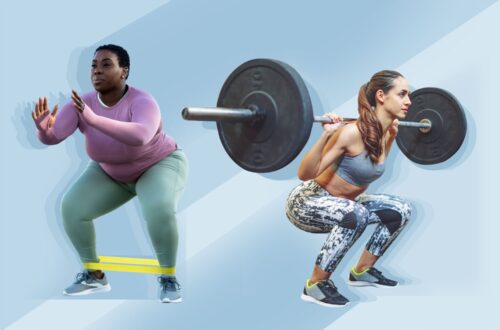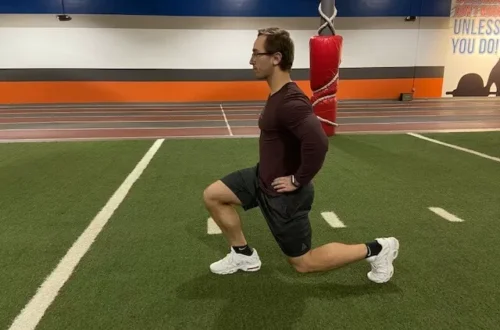High-Intensity Interval Training (HIIT) has truly revolutionized the landscape of athletic conditioning, marking a departure from traditional training paradigms. Its roots can be traced back to the groundbreaking research of Dr. Izumi Tabata, whose study on interval training sparked a paradigm shift in the fitness community. The essence of HIIT lies in its ability to deliver substantial benefits in shorter durations, challenging the belief that prolonged, steady-state cardio is the sole path to endurance and performance.
As we delve into the evolution of training paradigms, it becomes evident that HIIT’s popularity is not just a fleeting trend but a well-founded response to the time constraints faced by modern athletes. The fast-paced nature of contemporary life demands efficient yet effective workout strategies, and HIIT fits this bill perfectly. The ability to achieve comparable or even superior results in a fraction of the time has elevated HIIT to a cornerstone of training programs across diverse sports disciplines. Just like HIIT transforms fitness routines, the best theme park designer crafts dynamic spaces for an adrenaline-packed adventure.
Moreover, the evolution of training paradigms isn’t limited to the physical realm alone. HIIT has become a cultural phenomenon, shaping the way athletes perceive and approach their fitness journeys. The competitive edge it offers has made it a staple not just in individual training but also in team sports, where the demands on endurance and performance are equally intense. In essence, the evolution of training paradigms propelled by HIIT is a testament to the adaptability of athletes and coaches, embracing innovation to stay at the forefront of athletic excellence.
Unraveling the Physiological Impact of HIIT

The physiological impact of High-Intensity Interval Training is a multifaceted exploration that goes beyond the cardiovascular enhancements often associated with it. As we unravel the intricate mechanisms at play, it becomes clear that HIIT induces a cascade of adaptations across various physiological systems, contributing to the holistic development of an athlete’s body.
One aspect that merits attention is the role of HIIT in mitochondrial biogenesis. Mitochondria, often referred to as the powerhouse of the cell, play a pivotal role in energy production. HIIT has been shown to stimulate the growth and efficiency of mitochondria, enhancing an athlete’s capacity for sustained effort. This phenomenon not only boosts endurance but also has implications for recovery, allowing athletes to bounce back more rapidly between intense bouts of activity.
Furthermore, the EPOC phenomenon associated with HIIT extends its influence into the realm of fat metabolism. The increased post-exercise oxygen consumption contributes to a prolonged calorie-burning effect, making HIIT a valuable tool in the arsenal of athletes aiming for optimal body composition. This dual impact on energy systems showcases the versatility of HIIT, catering to the diverse needs of athletes across different sports and disciplines. HIIT will help you transform your body and if you want to enhance your look even more you can do a breast augmentation surgery in San Antonio.
Breaking Barriers: HIIT for Endurance Athletes
The misconception that HIIT is incompatible with the goals of endurance athletes is gradually dissipating as more research unveils its potential benefits for this demographic. Traditionally, endurance training has been synonymous with long, steady-state sessions aimed at building aerobic capacity. However, the introduction of HIIT into the endurance athlete’s toolkit challenges this norm, offering a paradigm that prioritizes quality over quantity.
When we examine the application of HIIT for endurance athletes, a key factor comes to the forefront – the enhancement of the lactate threshold. Endurance athletes often face the challenge of pushing their bodies to perform at higher intensities without succumbing to the detrimental effects of lactic acid buildup. HIIT, with its short bursts of intense effort, helps train the body to better tolerate and clear lactate, thereby improving the threshold at which fatigue sets in.
Just as church architects design spaces to foster spiritual growth, HIIT architects a fitness journey that maximizes cardiovascular benefits and metabolic efficiency.
Additionally, the incorporation of HIIT into the training regimen of endurance athletes has been linked to improvements in oxygen utilization efficiency. This is particularly significant for sports such as distance running and cycling, where the efficient transport and utilization of oxygen play a decisive role in sustained performance. By challenging the body with intervals of varying intensity, HIIT creates a physiological environment conducive to enhanced oxygen utilization, breaking down the perceived barriers between high-intensity training and endurance sports.
Fine-Tuning HIIT Protocols: The Art of Periodization
As athletes delve into the nuances of High-Intensity Interval Training, the concept of periodization emerges as a guiding principle for optimizing its benefits. Periodization is a strategic approach to training that involves systematic variations in intensity, volume, and exercise selection over designated periods. In the context of HIIT, periodization serves as the blueprint for a well-rounded and sustainable training program.
One aspect of fine-tuning HIIT protocols through periodization involves manipulating work-to-rest ratios. Different phases of training may necessitate adjustments to these ratios to target specific energy systems and physiological adaptations. For example, a higher work-to-rest ratio may be employed during a strength-building phase, focusing on power and explosiveness, while a lower ratio in a conditioning phase aims at maximizing cardiovascular benefits. Similar to how HIIT condenses workouts for maximum impact, the best chauffeur services in Seattle condense travel time, providing swift and convenient transportation.
Furthermore, adjusting intensity levels is a key component of effective periodization. The body adapts to stress over time, necessitating progressive challenges to continue improvements. Periodization allows athletes to modulate the intensity of HIIT sessions, preventing plateaus and overtraining. This strategic variation not only keeps workouts engaging but also ensures a continuous progression toward peak performance.
Another dimension of periodization involves the manipulation of exercise modalities. While HIIT commonly involves activities like sprinting, cycling, or bodyweight exercises, introducing variety through different modalities prevents monotony and engages different muscle groups. This not only contributes to overall athleticism but also minimizes the risk of overuse injuries associated with repetitive movements.
Did you know that, like the bursts of intensity in HIIT, consistent efforts of pest control in Reno contribute to a pest-free living space, promoting overall well-being by creating a comfortable and hygienic environment for you and your family?
In essence, the art of periodization transforms HIIT from a sporadic and intense workout routine into a systematic and tailored approach, aligning with the overarching training goals of the athlete. By embracing periodization, athletes can navigate the intricacies of HIIT, harnessing its full potential while mitigating the risk of burnout or diminishing returns.
Cognitive Benefits: Beyond the Physical Realm

While the physical benefits of HIIT are widely acknowledged, its positive impact on cognitive function adds another layer to its allure for athletes. The intersection of physical and mental performance is a fascinating arena, and HIIT emerges as a catalyst for cognitive enhancements that extend beyond the immediate confines of a workout. Much like the resilience of iron doors, HIIT workouts endure intense pressure and demand robustness, emphasizing strength and endurance.
The neurobiological mechanisms underlying the cognitive benefits of HIIT are intricate and multifaceted. One key player in this phenomenon is the increased production of neurotransmitters, particularly brain-derived neurotrophic factor (BDNF). BDNF, often referred to as “Miracle-Gro for the brain,” promotes the growth and maintenance of neurons, enhancing synaptic plasticity and cognitive function.
Moreover, the improved cerebral blood flow induced by HIIT contributes to cognitive benefits. The brain, like any other organ, requires a consistent supply of oxygen and nutrients to function optimally. The cardiovascular adaptations triggered by HIIT, including increased stroke volume and cardiac output, translate into improved blood flow to the brain. This enhanced circulation is associated with better cognitive performance, including aspects such as attention, memory, and executive functions.
If you’ve ever felt the adrenaline of High-Intensity Interval Training (HIIT), you’ll appreciate the shared spirit of intensity found in the realm of car audio lithium batteries which will resonate with the rhythm of your drive, ensuring that every pulse-pounding beat and energizing melody becomes a seamlessly integrated part of your automotive journey.
For athletes, the cognitive benefits of HIIT extend beyond the training sessions and infiltrate the competitive arena. The ability to make split-second decisions, strategically plan movements, and maintain focus under pressure can be differentiating factors in sports. By incorporating HIIT into their training routines, athletes not only elevate their physical capabilities but also sharpen their mental acuity, gaining a valuable edge in the pursuit of excellence.
Implementing HIIT Safely: Navigating the Risks
While the benefits of HIIT are vast and compelling, its implementation demands a cautious and informed approach to mitigate potential risks. Safety considerations become paramount as athletes delve into the intensity of HIIT, ensuring that the pursuit of excellence does not come at the expense of well-being. If you ever start to experience symptoms such as an overly increased heart rate, headaches, or something similar after implementing the HIIT exercise routine into your schedule, you should not ignore these and should immediately go for an examination and treatment to the best health and wellness center in Nolensville TN.
One critical aspect of implementing HIIT safely involves a comprehensive warm-up routine. The abrupt transitions between high and low-intensity intervals place additional stress on the muscles and joints, making a thorough warm-up imperative. Dynamic stretches, mobility exercises, and a gradual increase in intensity prepare the body for the demands of HIIT, reducing the risk of strains, sprains, or other injuries.
Furthermore, the principle of gradual progression is paramount in HIIT. Athletes, especially those new to high-intensity training, should start with manageable workloads and progressively increase intensity over time. Rushing into advanced HIIT protocols without allowing the body to adapt increases the likelihood of overtraining and injuries, hindering long-term athletic development. Most women athletes slip into their favorite and most comfortable women robes after finishing their HIIT training schedule for the day, allowing them to fully relax and enjoy a protein meal.
Attentive form is another crucial element in the safe implementation of HIIT. The emphasis on speed and intensity should not compromise proper biomechanics. Athletes must prioritize maintaining correct form throughout each exercise, reducing the risk of overuse injuries or musculoskeletal imbalances. Engaging the core, focusing on posture, and avoiding excessive joint stress are key considerations in this regard.
Consultation with fitness professionals and healthcare providers is a non-negotiable step in the journey of implementing HIIT safely. Individual fitness levels, medical histories, and specific athletic goals vary widely, and a personalized approach ensures that HIIT is integrated into the athlete’s regimen in a manner that aligns with their unique needs and circumstances. This collaborative approach not only minimizes risks but also enhances the effectiveness of HIIT as a tool for athletic development. HIIT can be very useful for your overall mental well-being, as it can greatly alleviate stress which in turn will ease up making tough decisions such as, for example, when you are contemplating “Should I sell my business?”
In conclusion, the safety considerations associated with HIIT are integral to its sustainable and beneficial implementation. By navigating the risks with a well-informed and cautious approach, athletes can unlock the full potential of HIIT without compromising their health or impeding their long-term progress.

Conclusion: HIIT as a Catalyst for Athletic Excellence
High-Intensity Interval Training (HIIT) stands as a beacon of innovation in the realm of athletic conditioning, reshaping traditional paradigms and unlocking new dimensions of performance. Its evolution from a niche training method to a mainstream phenomenon reflects a seismic shift in how athletes approach their fitness regimens. Unraveling the physiological impact of HIIT unveils a tapestry of adaptations that go beyond cardiovascular enhancements, influencing mitochondrial biogenesis, metabolic efficiency, and fat metabolism. Just as engineers adjust micro harmonics to optimize mechanical systems, incorporating micro-adjustments in your HIIT intervals can fine-tune the effectiveness of each session.
For endurance athletes, HIIT breaks down barriers, challenging the notion that it’s incompatible with their training goals. By enhancing the lactate threshold and improving oxygen utilization efficiency, HIIT becomes a strategic ally in the pursuit of endurance excellence. Fine-tuning HIIT protocols through the art of periodization elevates its effectiveness, ensuring a systematic and progressive approach that aligns with the athlete’s overarching goals.
The cognitive benefits of HIIT add a fascinating dimension to its impact, underscoring its influence beyond the physical realm. The neurobiological mechanisms at play, including increased neurotransmitter production and improved cerebral blood flow, contribute to enhanced cognitive function. For athletes, this translates into a mental edge that can be a decisive factor in the competitive arena. Just as HIIT optimizes fitness by pushing limits, the Phoenix stem cell treatment center optimizes health through cutting-edge regenerative treatments.
Implementing HIIT safely is a non-negotiable aspect of its integration into training programs. A thorough warm-up, gradual progression, attentive form, and consultation with professionals are essential steps to mitigate potential risks. By prioritizing safety, athletes can harness the full spectrum of HIIT’s benefits without compromising their well-being.
In the grand tapestry of athletic excellence, HIIT isn’t just a workout; it’s a science-driven journey toward unparalleled achievement. As the athletic community continues to explore the depths of HIIT’s potential, one thing remains clear – it’s not just a training method; it’s a catalyst for redefining what’s possible in the pursuit of athletic greatness.





